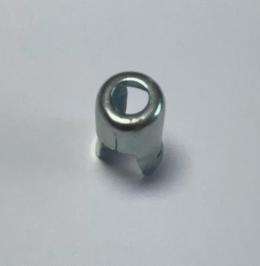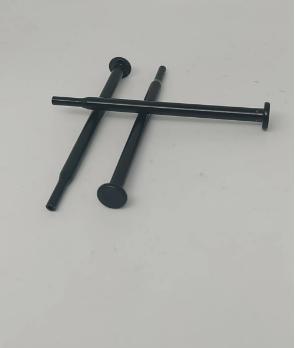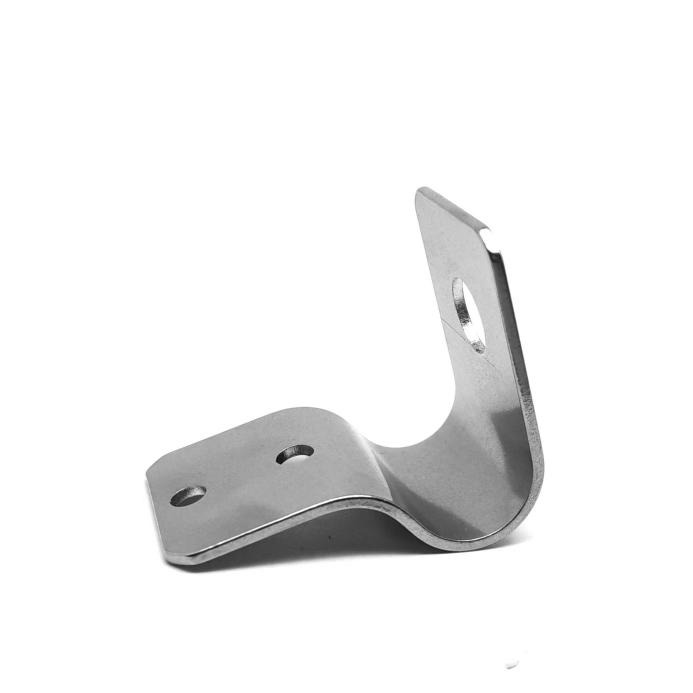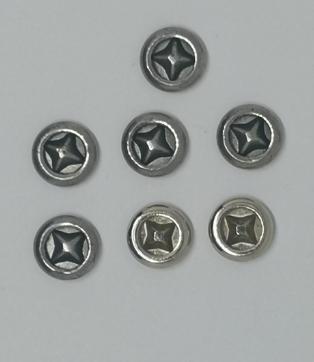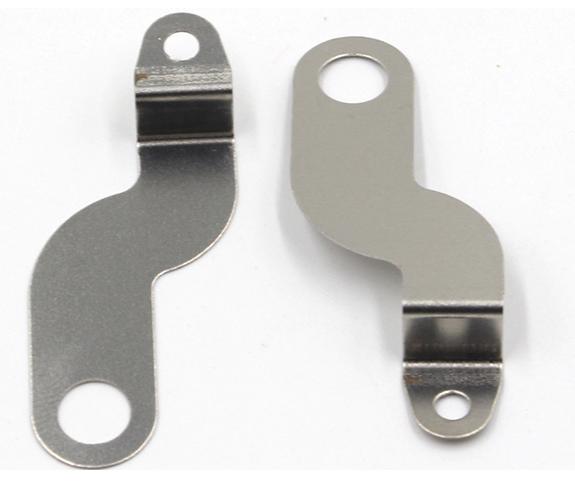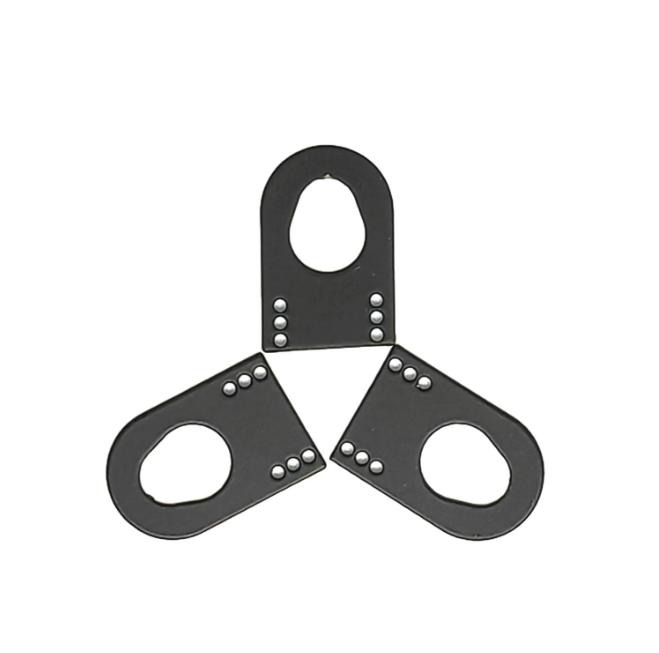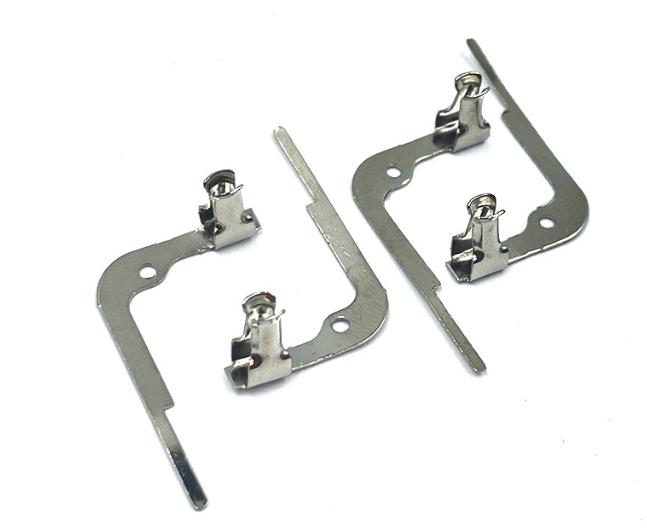Prototyping and Customization with Metal Stamping
Metal stamping is a versatile and cost-effective manufacturing process that has grown in popularity across a wide range of industries. It entails shaping and cutting metal sheets into specific designs and forms using a precision tool and die set. Metal stamping has a number of significant advantages, including the ability to provide customization and rapid prototyping solutions. In this article, we will explore how metal stamping can be used for customization and prototyping, as well as its advantages and applications.
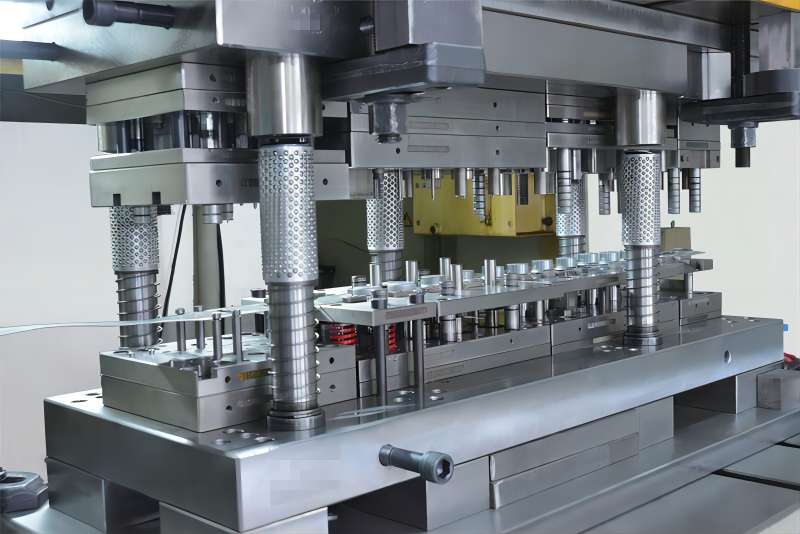
The Basics of Metal Stamping
1. Key Components
| Component | Description |
| 1. Die | Tool used for cutting or forming the metal into a specific shape.Can be single or multiple stages. |
| 2. Press | Machine is used to apply force to the metal, forcing it into the shape defined by the die. Hydraulic or mechanical presses are common. |
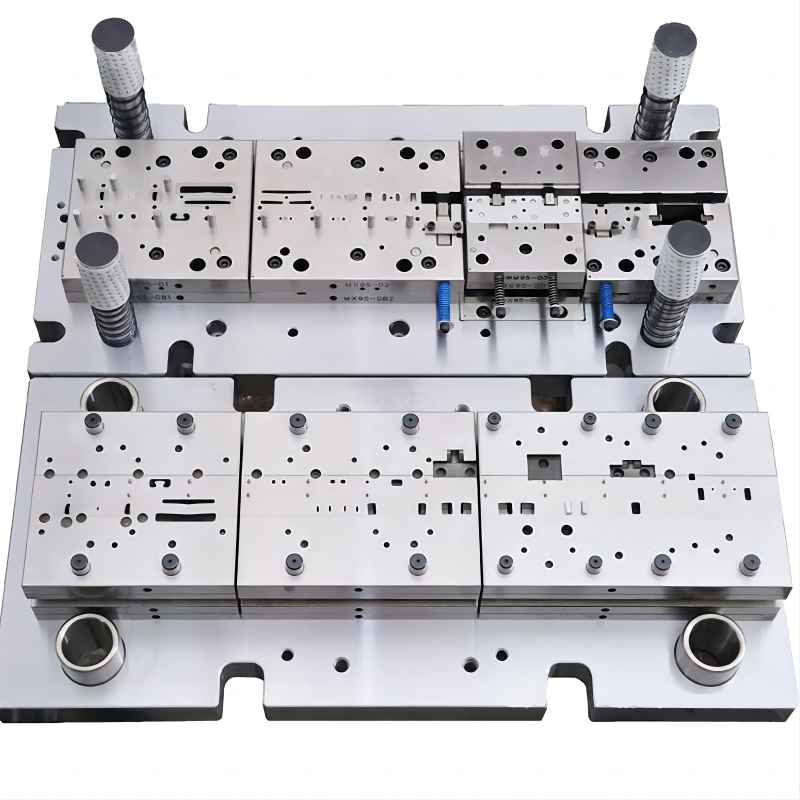
2. Steps of Metal Stamping
| Steps | Description | Applications |
| 1. Blanking | Process of cutting a flat shape from sheet metal dies. Outling the desired types | Creating flat components like washers and discs. |
| 2. Piercing | Punching holes in the sheet metal.Removes a portion of material. | Creating holes for fasteners or decorative purposes. |
| 3. Bending | Deforming the metal along a straight axis.Achieves angular shapes. | Forming brackets, channels, and other angular components. |
| 4. Drawing | Forming a flat sheet into a three-dimensional shape.Involves deepening a part through stretching. | Producing cylindrical or box-like components. |
3. Advantages
| Advantage | Description |
| 1. High Precision | Achieves tight tolerances and precise shapes.Suitable for mass production. |
| 2. Cost-Effective | Economical for large production runs.Minimizes material waste. |
| 3. Versatility | Adaptable to various metals and alloys.Can produce a wide range of part geometries. |
| 4.Speed of Production | Rapid manufacturing process.Ideal for high-volume production. |
Key Aspects of Customization with Metal Stamping
Metal stamping offers an array of customization options, making it a preferred choice for manufacturing components tailored to specific needs.
1. Design Flexibility
Engineers can design intricate and highly detailed parts, allowing for complex geometries and features.
2. Material Selection
Depending on the application, different materials can be used, such as high-strength steel for automotive components or corrosion-resistant material for outdoor equipment.
3. Tolerances
Metal stamping produces components with tight tolerances and high precision, ensuring that they meet stringent quality and performance standards.
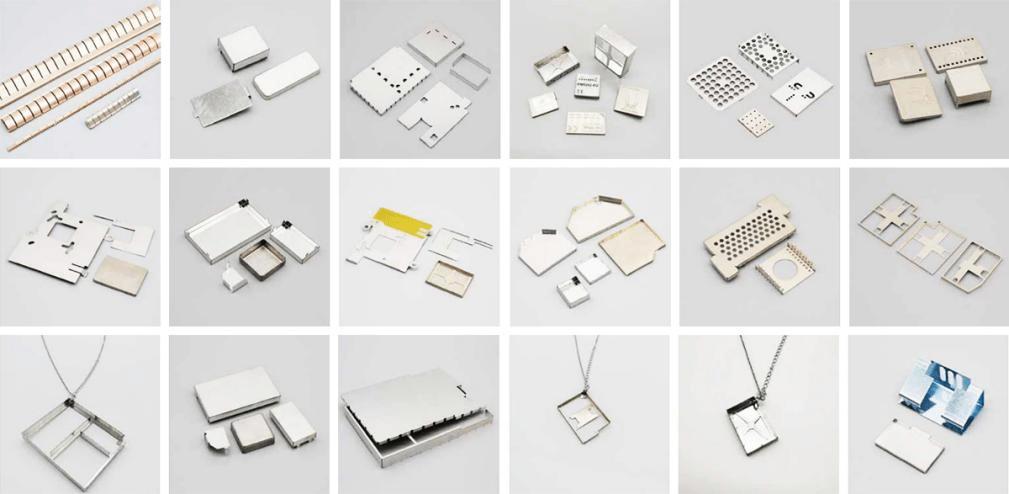
4. Surface Finishes
To improve appearance and performance, finished parts can be customized with surface treatments such as painting, plating, powder coating, or anodizing.
5. Quantity
Customization is not limited to small quantities. Metal stamping is capable of producing both small prototype runs and large-scale production quantities efficiently.
The Benefits of Prototyping with Metal Stamping
Before full-scale production, the prototyping phase of product development is critical for testing and refining designs. Metal stamping prototyping has a number of advantages that make it an excellent choice for engineers and designers.
1. Speed
Metal stamping is a relatively fast process, which means that prototypes can be produced quickly, facilitating rapid design iterations and testing.
2. Cost-Effective
Metal stamping, despite the initial investment in tooling, can be a very cost-effective method of prototyping. The tooling costs can be amortized over larger production runs, making it a cost-effective long-term manufacturing option.
3. Material Testing
Prototypes can be manufactured using the exact materials intended for full-scale production, allowing engineers to assess material properties and performance characteristics accurately.
4. Precision
Metal stamping parts have tight tolerances and high precision, ensuring that prototypes closely match the intended final product, which is especially crucial for assessing functionality.
5. Iterative Design
Prototyping with metal stamping allows for iterative design changes, facilitating the refinement of the final product through multiple cycles of testing and improvement.
Applications of Metal Stamping for Prototyping and Customization
1. Prototyping of Sheet Metal Components
Metal stamping is commonly used for rapid prototyping of sheet metal components. It allows designers and engineers to quickly iterate on designs and produce prototype parts for testing and validation before full-scale production.
2. Customized Enclosures and Housings
Metal stamping enables the production of customized enclosures and housings for electronic devices, machinery, and appliances. These enclosures can be tailored to specific dimensions, shapes, and features to accommodate the unique requirements of each application.
3. Specialized Brackets and Mounting Hardware
Metal stamping is ideal for producing specialized brackets, mounting hardware, and fasteners for a wide range of applications. These components can be customized to fit unique mounting points, support different loads, and integrate with other system components.

4. Nameplates, Labels, and Tags
Metal stamping is commonly used to produce nameplates, labels, and tags for product identification and branding purposes. These components can be customized with logos, serial numbers, barcodes, and other information to meet specific requirements.
5. Decorative Trim and Accents
Metal stamping is often used to produce decorative trim and accents for automotive, furniture, and architectural applications. These components can add aesthetic appeal and enhance the appearance of products and structures.
6. Electrical Contacts and Connectors
Metal stamping is utilized to produce electrical contacts and connectors for use in electrical and electronic systems. These metal stamping electrical contacts can be customized to ensure reliable electrical conductivity and compatibility with different devices and systems.
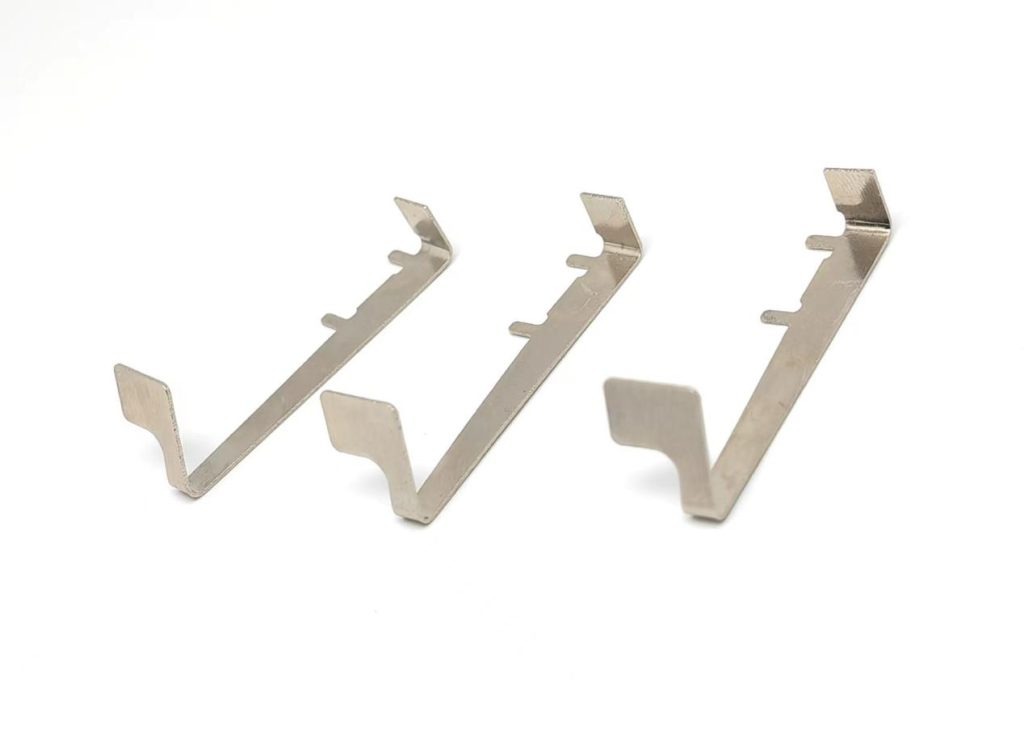
7. Prototype Heat Sinks and Thermal Management Components
Metal stamping is employed to produce prototype heat sinks and thermal management components for electronic devices and power electronics applications. These components can be customized to optimize thermal performance and dissipate heat effectively.
8. Customized Sheet Metal Parts for Machinery and Equipment
Metal stamping is used to produce customized sheet metal parts for machinery, equipment, and industrial applications. These parts can be tailored to meet specific performance requirements, tolerances, and environmental conditions.
9. Automotive Prototyping and Customization
Metal stamping is widely used in the automotive industry for prototyping and customization of components such as brackets, panels, and structural components. Customized metal stampings can be used for concept vehicles, specialty vehicles, and aftermarket modifications.
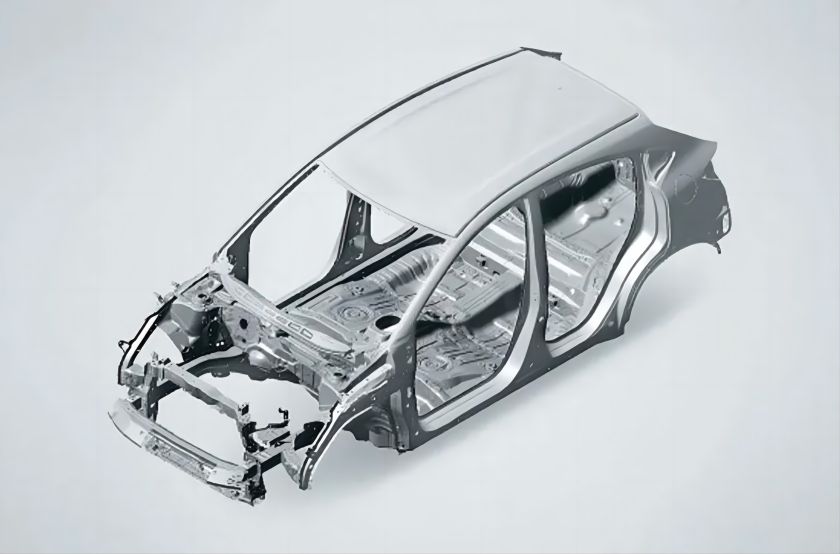
10. Medical Device Prototyping
Metal stamping is employed in the prototyping of medical devices and equipment. Customized metal stampings can be used for surgical instruments, implantable devices, diagnostic equipment, and medical device enclosures.

Conclusion
Metal stamping is a versatile manufacturing process that allows engineers and designers to quickly and precisely create customized parts. It is a valuable tool in product development because of its ability to rapidly prototype designs and provide customization options. Metal stamping is essential in bringing innovative concepts to life and ensuring that products meet the highest quality standards and performance in the automotive, aerospace, medical, and electronics industries.

